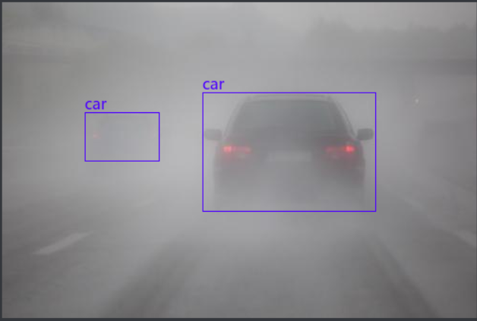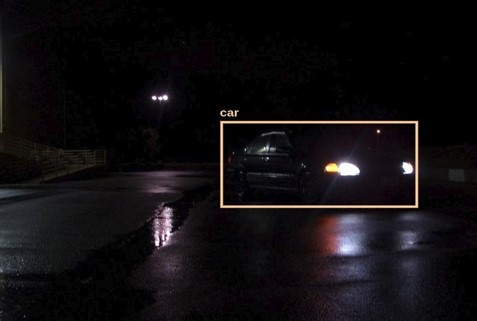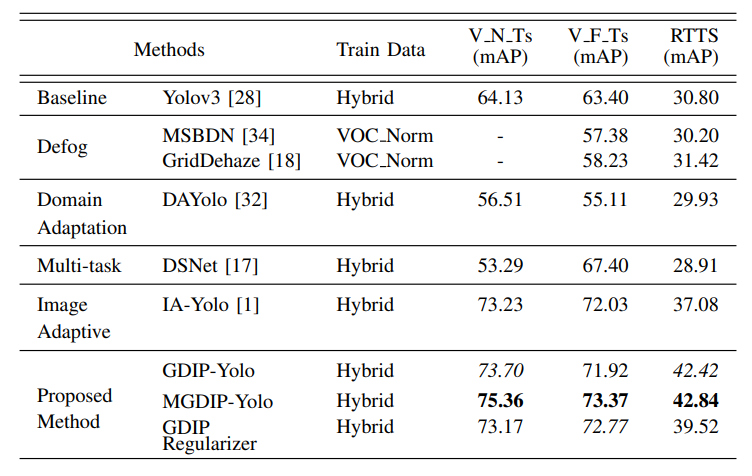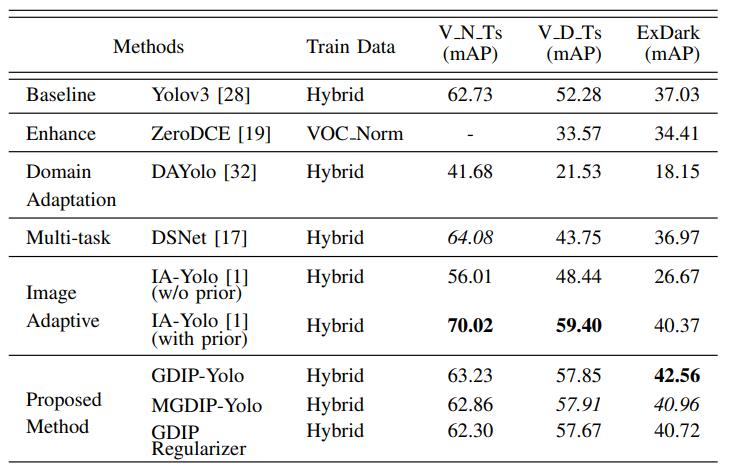|
|
|
|
|
|
|
Accepted at ICRA 20231 Robotics Research Centre, IIIT Hyderabad, India. 2 Australian Centre for Robotic Vision at the Queensland University of Technology (QUT), Brisbane, Australia. 3 ZF Friedrichshafen TCI, Hyderabad, India |
|
|
|

|
|
|
|
|
|
|
|
Accepted at ICRA 20231 Robotics Research Centre, IIIT Hyderabad, India. 2 Australian Centre for Robotic Vision at the Queensland University of Technology (QUT), Brisbane, Australia. 3 ZF Friedrichshafen TCI, Hyderabad, India |
|
|
|

|
We tackle this problem by proposing a Gated Differentiable Image Processing (GDIP) block, which enhances the image by performing weighted Image Processing (IP) operations concurrently on the adverse input image. This enhanced output is sent to the downstream object detection network, leading to superior detection performance to other state-of-the-art methods. 

|
|
| Using our GDIP block, we propose novel variants as below:
|
|
Foggy setting 
Low-lighting setting 
NOTE: IA-Yolo uses a prior (i.e. IA-Yolo (with prior)) for low-lighting setting by removing the defogging and white balance filters. Hence, we evaluate IA-Yolo (w/o prior) by incorporating the defogging and white balance filters (their same pipeline as in case of foggy setting) to do fair comparison with our approach. |
|
GDIP runs seamlessly on video sequences in the wild without any need for retraining or fine tuning, showcasing its ability to detect objects by composing Image Processing operations through gating by training on only synthetic adverse data. 

|
If you have any questions, please reach out to any of the above mentioned authors.